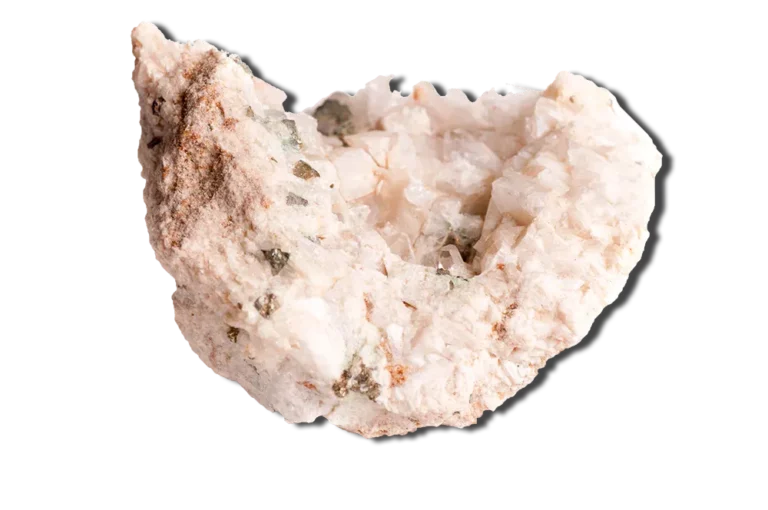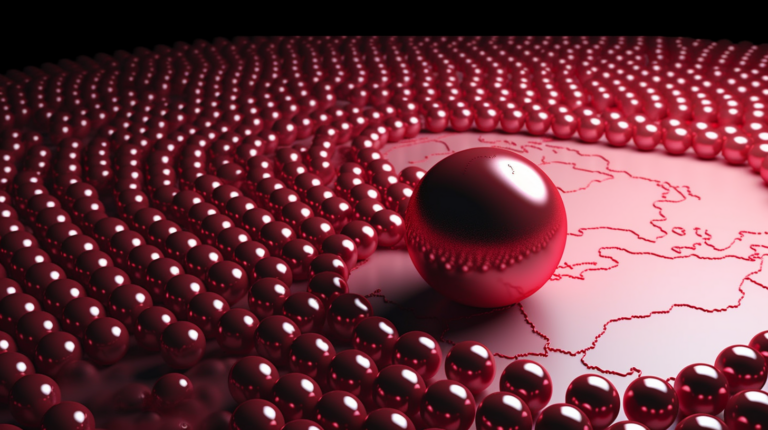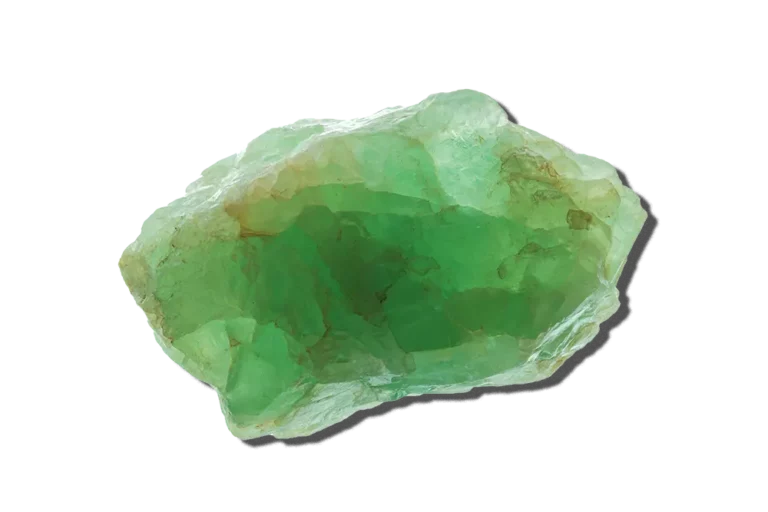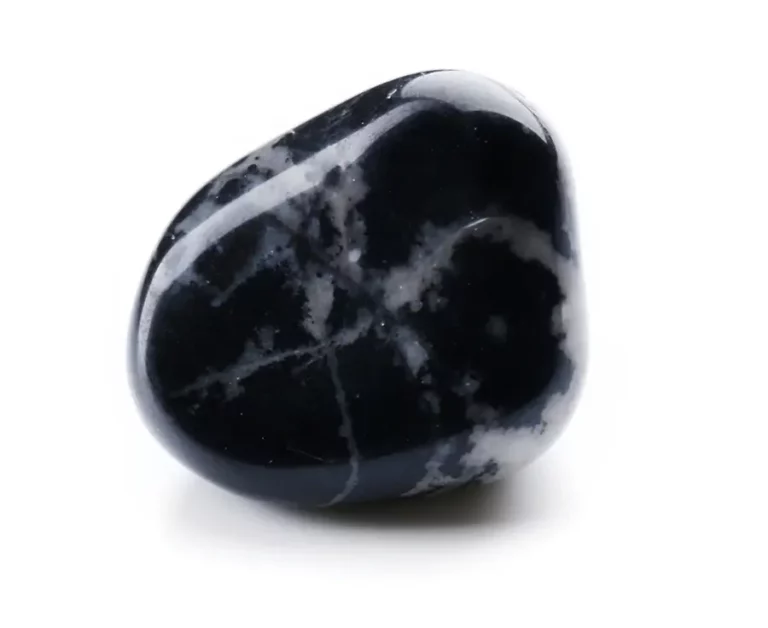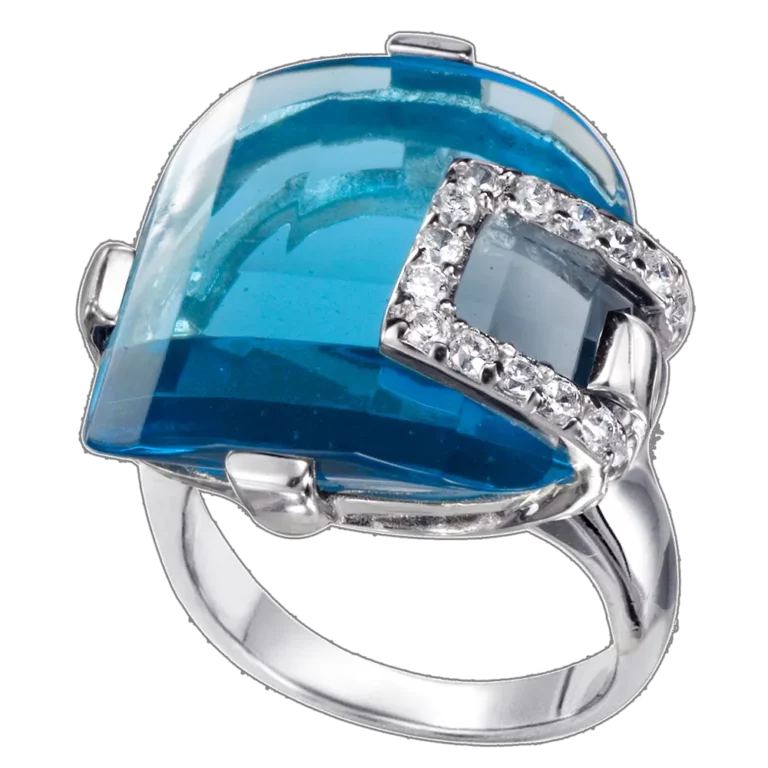Serpentine Stone: Properties, Benefits & Meanings
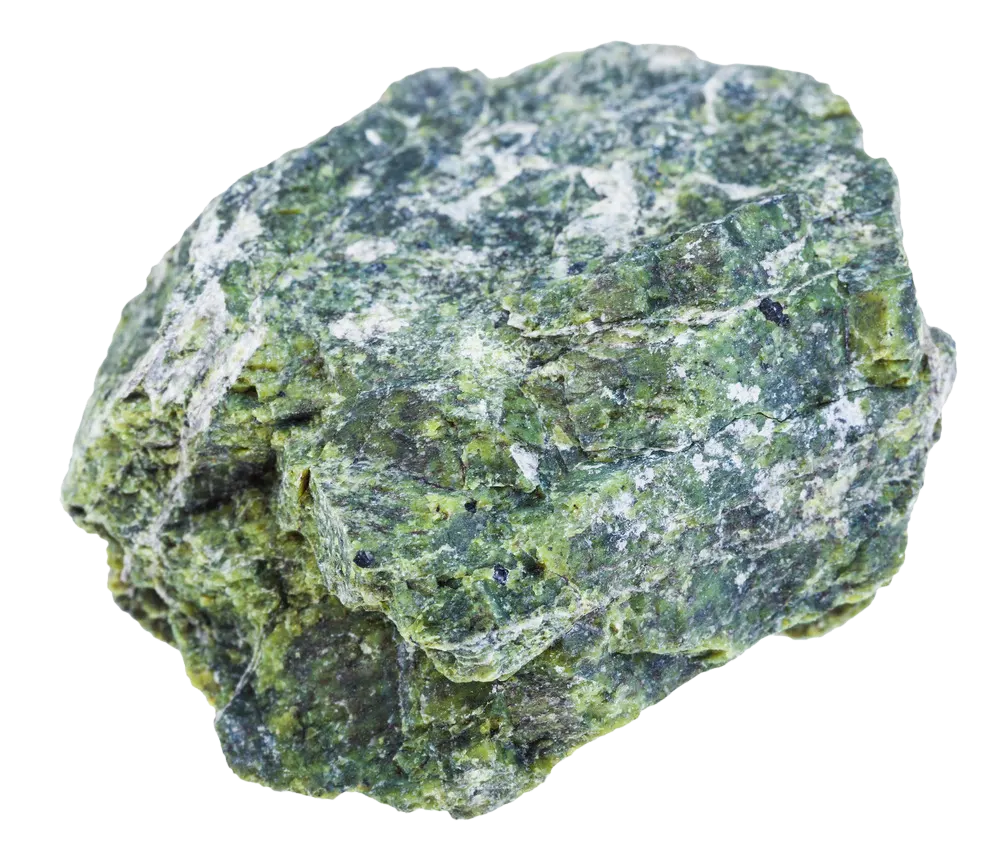
Serpentine Stone Overview
Serpentine Stone is a stunning green gemstone that resonates with the Crown Chakra and has several uses in jewelry, decoration, and architecture. It is not the name of a single mineral. Instead, it’s a group of minerals with similar makeup.
There are many different types of serpentine, but all of them share certain characteristics. Their most important function is in the manufacture of asbestos on an industrial level. This article will take a look into the properties, meanings, and uses of the Serpentine stone.
What Is Serpentine Stone
Serpentine is a group of minerals that have similar chemical compositions. These stones have many colors and patterns, including green, brown, black, white, and yellow. Their multicolored nature, combined with their interesting composition, make them a centerpiece in many collections.
The name “serpentine” is derived from the Latin ‘serpens’ and is given to the stone because it resembles the skin of a snake or a serpent. Serpentine is usually green in color, but it can also be black, white, or yellow. It has been used as jewelry since ancient times.
Other stones that go well with Serpentine include Chrysoprase, Jade, and Petalite.
Serpentine Stone Appearance
It is a metamorphic rock that forms in subduction zones. Serpentine is known for its unique coloration and patterns, often mottled or speckled with white streaks. Serpentine contains minerals such as Chrysotile, antigorite, and lizardite.
This beautiful gem is commonly green with white streaks but can also be black, white, or yellow. It has been used as jewelry since ancient times.
Serpentine’s green color, patterned appearance—and its slippery feel—all remind one of a snake, and that is where its name, “serpentine,” was derived.
Serpentine is translucent to opaque, having a waxy luster, and can accept a polish on its surface. This gemstone is ideal for architecture, jewelry making, and ornamental purposes.
Where Is It Found?
Serpentine Stone is found in many countries worldwide, including:
A more comprehensive list can be found in the link above.

Physical Characteristics
| Mineral Group | magnesium silicate minerals |
| Formula | Mg6Si4O10(OH)8 |
| Color | Green, yellowish-green, white, yellow-brown, red-brown, black |
| Hardness (Mohs scale) | 3- 6 |
| Refractive Index | 1.560 to 1.571 |
| Fracture | Uneven, Splintery |
| Luster | Greasy |
| Specific Gravity | 2.44 to 2.62 |
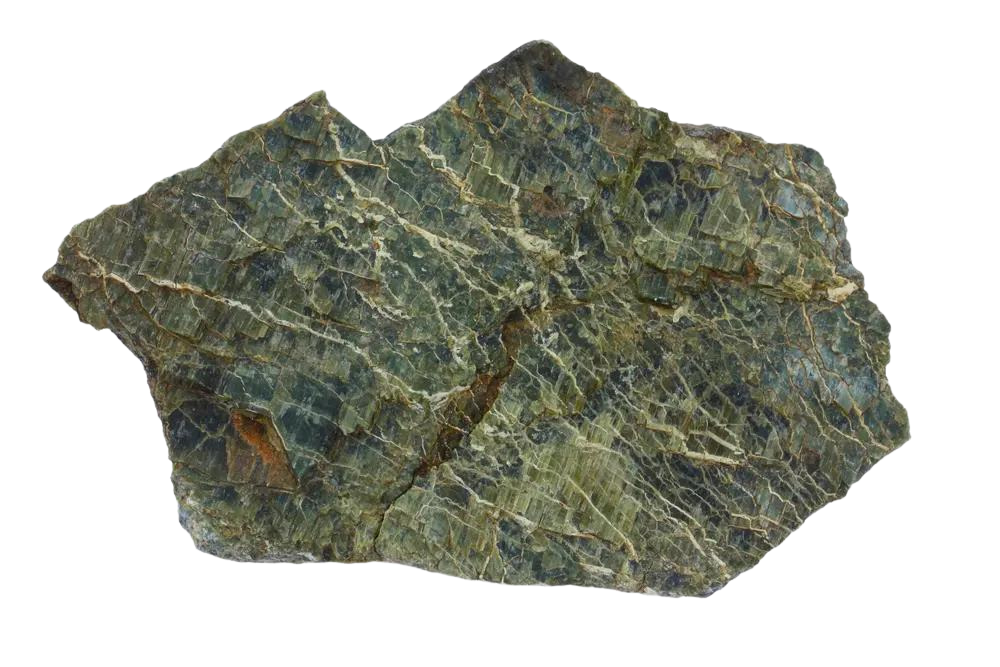
Cost and Value
Price: Serpentine stone is available in various forms. Its price varies from $2-$70/ ct.
The value of a Serpentine stone depends upon the following factors:
The Four C’s Criteria:
- Color: The color of a Serpentine stone has a very strong effect on its value. The most popular colors are green and brown. However, one can also find these stones in shades of white, gray, yellow, brown, and black. In addition, most gems are veined or spotted and may have areas that exhibit a cat’s-eye effect—a rainbow of colors depending on the angle of viewing. The more vibrant the color is, the higher its price will be.
- Clarity: Serpentine is rarely clear, but most gems are eye-clean. They may have inclusions visible with the naked eye or under magnification, but these imperfections do not affect the stone’s beauty.
Generally, Serpentine is translucent to opaque, and in rare cases, it’s semi-transparent. Most gemstones contain impurities, which sometimes appear as white or black veining. The more intricate the pattern formed by these inclusions, the more desirable the stone. - Cut: Serpentine is cut into many shapes, including ovals and rounds. A well-cut gemstone’s brilliant, sparkly luster is one of its most important characteristics. Therefore, a stone with good overall color and transparency but poor cutting may be less expensive than a similar stone that’s been expertly crafted into an ideal shape.
- Carat Size: Serpentine is available in a variety of sizes. It’s commonly cut into small pieces used for jewelry, but larger stones are also available. Serpentine gemstones weigh in carats, while dimensions may sell serpentine carvings and sculptures.
How can a person tell if Serpentine Stone is Real or Not?
- Check Imperfections: Natural Serpentine stone contains calcite impurities and other mineral inclusions, which appear as white or black veins in the stone, giving it a beautiful intricate pattern. However, the lab-created serpentine stone is usually perfect, with no impurities!
- Check Hardness: Serpentine stone has a hardness of 3-6 on the Mohs scale, meaning you can scratch it with a fingernail. Lab-created Serpentine will have an even higher hardness than natural stone and can’t be scratched!
- Check Color: Natural Serpentine stone is usually green or brown, but some varieties can also be yellow or gray. Unfortunately, the color of lab-created stones is extremely hard to distinguish from natural ones as they are usually very close in appearance.
- Fog Test: To test whether a stone is truly serpentine, put it in your mouth and exhale gently. The fog should last for two seconds or less if the stone is genuine; longer than that indicates imitation samples.
- Ask an Expert: If you still need to determine whether your gemstone is real or fake, ask a professional jeweler to examine it. He’ll be able to tell its authenticity based on appearance and composition.
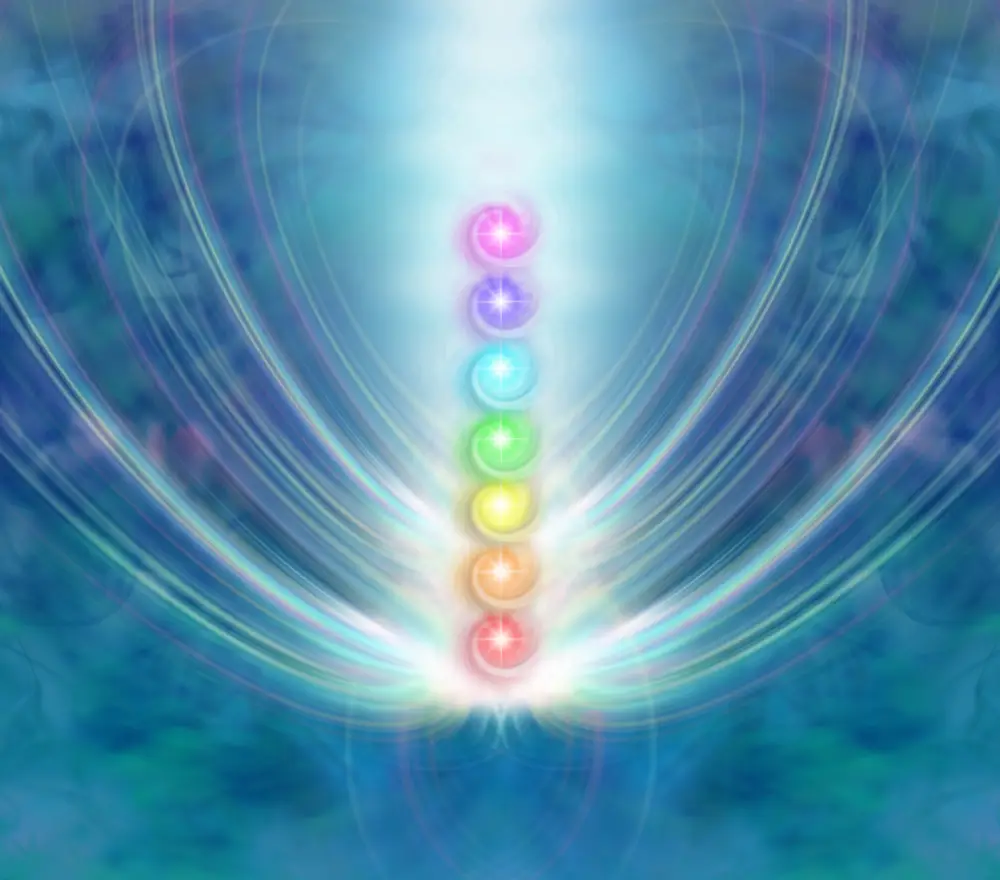
Chakra Association
Serpentine stone stimulates the Crown chakra.
It represents our connection to the divine, a feeling of oneness, and being part of something greater than ourselves.
When this chakra is in harmony, we feel confident, clear-headed, and calm.
When this chakra is not balanced, we may feel disconnected from our spiritual self, depressed or anxious. The Crown Chakra is linked with the color violet and the element of spirit.
Where is the Crown Chakra located?
It is the chakra at the top of the head and is associated with higher spiritual energies.
What is another name for the Crown Chakra?
The Crown Chakra is also called the Seventh Chakra or Sahasrara in Sanskrit.
Serpentine Stone Meaning And Uses
Emotional Healing:
- As a crown chakra stone, Serpentine is a stone of spiritual protection that can help you connect with your higher self and Divine Spirit.
- It is a stone of protection that can help you to feel safe, secure, and at peace. In addition, you can use it for emotional healing by letting go of past traumas and negative emotions that are holding you back.
- It is also known for its soothing energy and can assist in calming anxiety, stress, fear, and panic attacks. In addition, it helps to bring in the sense of calmness and peace, which is why it’s often used for meditations.
- It can also help remove negative energy from the body, making it an excellent stone for those dealing with depression or stress.
- Activating the Crown Chakra brings psychic abilities and spiritual awakening and heals the heart of emotional pain, hurt, regret, etc.
Physical Healing:
- Serpentine supports the body’s efforts at rebalancing digestion. It is believed to be good for digestion problems such as diarrhea or constipation.
- It is an excellent stone for detoxifying the blood and the body. Hence, Serpentine aids in longevity.
- Serpentine is also believed to help balance energy flow through the body’s meridians. one can use it for stimulating and healing sore muscles, especially after exercise.
- It helps in Calcium and Magnesium absorption in the body. In addition, it acts as a pain reliever and treats biological problems like hypoglycemia and diabetes.
- Serpentine is believed to be good for the heart, kidneys, and stomach. Serpentine is also a natural anti-inflammatory agent, which can be helpful in dementia, Alzheimer’s, muscle weakness, pain, eczema, and other problems.
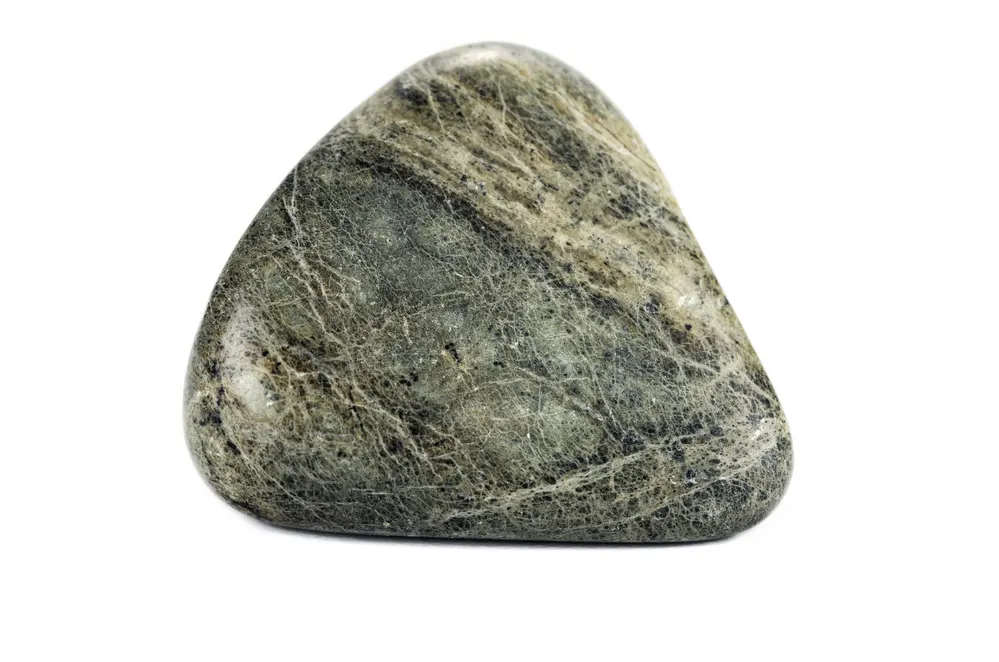
How to clean Serpentine Stone Jewelry?
To clean your Serpentine jewelry, follow these simple steps:
- The best way of cleaning any gem is to rinse it with lukewarm water and mild detergent. Next, use a soft toothbrush to scrub your gemstone’s surface gently.
- Then, rinse it with cold water and pat dry with a soft microfiber cloth.
- Do not use hot water or strong chemicals to clean your Serpentine stone jewelry. It can cause damage to the surface of your stone and dull it.
- It is recommended to avoid using any chemical products when cleaning Serpentine stone jewelry as these can damage the stone.
- Do not use ultrasonic chemicals or other boiling methods to clean your serpentine jewelry.
- To keep your serpentine jewelry pristine, wear it after applying perfumes or cosmetics.
- Store the jewelry in a soft cloth pouch or box. Avoid placing it in sunlight, as this can result in the stone losing its color.
FAQ
What Is Serpentine Stone Good For?
Serpentine stone is good for carving, jewelry, and other decorative accessories. It can be dyed to produce different colors of this beautiful stone. Serpentine stone, when polished, has a lustrous sheen that makes it highly desirable among jewelers and collectors alike. Serpentine has been used for centuries for its healing properties and decorative value. Pendants and earrings made from stones of the Serpentine group are very popular as jewelry.
What Are The Healing Properties Of Serpentine Stone?
Serpentine stone resonates with the Crown Chakra and is known for its healing properties. It helps clear negative energy and removes negative or stagnant energy from any space. The stone has also been used to treat skin diseases, eczema, heart problems, and kidney and stomach issues.
Serpentine stone is known for its calming, soothing, and healing properties. In addition, it is believed that the stone positively affects people who suffer from anxiety and stress-related disorders.
The stone is also known to help people with mental disorders such as dementia or Alzheimer’s. In addition, the serpentine stone is believed to improve blood circulation and increase energy flow throughout the body.
It has been used in meditation and other spiritual practices for centuries. Serpentine stone can attract love, money, and prosperity into your life.
How Hard Is Serpentine Stone?
The Mohs hardness of the serpentine stone varies between 3-6, which is relatively soft. Therefore, one can scratch it with a fingernail or a copper coin. However, it has a conchoidal fracture, which breaks into smooth, curved fragments when struck by another hard object.
Is Serpentine Stone Heat Treated?
Serpentine can be treated with resin to increase its stability and dyed to improve its color.
Green dyes enhance their “jade-like” appearance, allowing them to be used as substitutes for actual jade. In addition to producing greens, these dyes can also create oranges and purples—shades beyond Serpentine’s natural range but which imitate another popular gemstone: sugilite.


